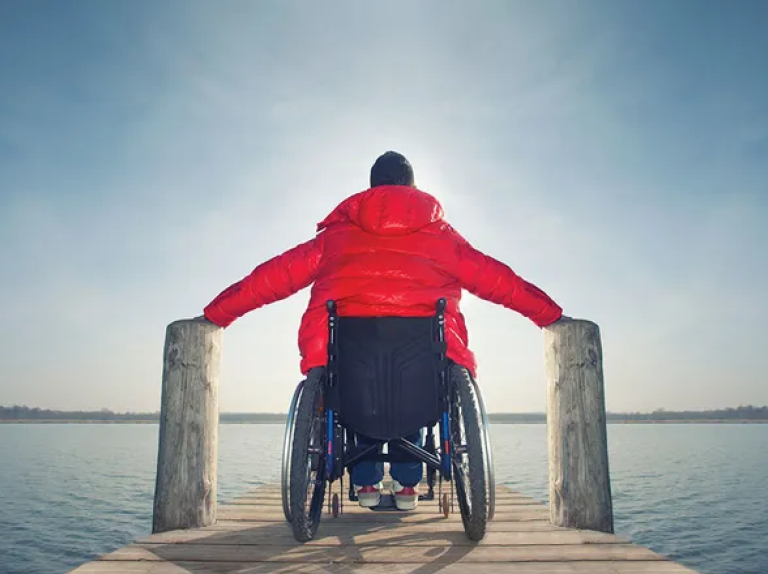
By: Stephanie Auslander, Destinations International
As the tourism industry moves forward with the strategy of growth over the next few years, the newly released National Tourism and Travel strategy has included travel accessibility for all as one of its key initiatives. Creating more diverse and equitable experiences for all travelers encompasses seven key strategies for fostering a more inclusive tourism destination. Identified actions in the strategies include assisting communities in providing accessible and inclusive tourism experiences, addressing infrastructure and environmental challenges from increased visitation with a key emphasis on enhancing diversity, balancing increased demand for high quality experiences with local community needs, having conversations with stakeholders who ensure meaningful involvement with underserved populations and increasing access to technology including interpretative services for visitor management.
According to the CDC approximately 26% of all adults in the United States have some type of disability. Addressing the challenge of making travel more accessible for all has generated innovative ideas on inclusivity within the industry. According to the open doors organization, the disability industry generates over $17.8 billion annually, with growth expected over the next decade. This presents an opportunity for the industry to expand its access to travelers of all kinds, and provide adequate training for frontline staff at hotels, restaurants, and airports to accommodate this growing sector, and enhance their tourism product offerings to match demand. Creating a more inclusive environment first includes the acknowledgement that everyone has different travel needs in accommodations, experiences, entertainment and the processing of information.

“Offering accessibility services is the right thing to do, and that will continue to drive action. What might create even greater momentum is the business sense to address a growing and increasingly important demographic,” (Tomas Lopez Ferne brand)
How can destinations work to create a more inclusive environment?
Address the main challenges
Destinations can prepare for this growing demographic by working to address barriers to entry for travelers with unique needs. Some of the main challenges identified when making travel more accessible include lack of information about accessibility at a destination, inaccuracy of information about accessibility at a destination, lack of trained personnel, and challenges with the physical location. To reduce these challenges, organizations can work to address accessibility from a universal point of view, make inclusivity part of the standard services without extra costs, innovate with technology, and be clear communicators about their destination’s accessibility.
Create effective communication
Making travel more diverse, inclusive, and equitable begins with a clear communication plan. Before travelers arrive, it is essential to set the stage in terms of accessible offerings your destination can provide as well as what they are not able to provide. Mesa, Arizona prioritizes accessibility and inclusion as part of their key strategic initiative in welcoming visitors. Featured on their website is a message to travelers advising them to feel comfortable visiting their community knowing they are in the company of compassion, kindness, and understanding. To provide clear communication, destinations can also inform travelers about accessible lodging, restaurants, attractions, ADA restrooms and ramps, adventure, assistive listening devices with closed captions, complimentary parking, and entertainment venues. As more travelers identify along the autism spectrum, destinations should offer messaging surrounding this growing segment. Mesa has been recognized as the first Autism-certified destination with more Tourism organizations following in its footpath.
Responsive service
Providing good customer experiences is crucial for any traveler seeking to venture out for the first time. In an ideal journey, internal staff will be trained along the way at hotels, restaurants, theme parks, entertainment shows, and adventure tours. Personnel can be trained in all aspects of accessibility to account for the differences in traveler needs including processing of information, sensory overload, and ensuring mobility access in priority areas. Research suggests rising demand for more personalized services in both communication support services and personalized guided visits. Creating personalized tailored experiences per traveler needs will help provide a more seamless experience. Destinations can help provide a more seamless journey through the creation of accessible traveler itineraries. Itineraries can be personalized to include flights, local transportation, unique events, lodging, dining, and tours. Once the travelers have a finalized itinerary, maps are created that outline unique accommodations, attractions, and restaurants easing the logistical planning process. Prior to arrival at the destination, travelers can plan out the itineraries in a virtual setting allowing them time to get more acquainted with the destination offerings.
Standardized content and services
According to the UNWTO, accessible travel is a central element of sustainable tourism and policy planning. Creating more accessible travel options presents a unique position for destination organizations looking to restart their brand in the post-pandemic world. To achieve this goal, organizations need to create accessible environments that enhance the tourism product leading to more opportunities for persons with disabilities. Providing standardized content and services in the destination can follow key strategies which yield a more accessible and inclusive environment. These key initiatives include adapting protocols for visitors with disabilities at attractions, including a ratio of reserved seating for persons with disabilities, keeping accessibility equipment in a stored location, accounting for potential risk at key attractions, and having adaptable travel itineraries & routes that account for different group sizes and abilities.
Although there is not a one size fits all approach when it comes to creating a more equitable travel space, destinations can lead the way in creating standardized processes that accommodate more than one type of traveler. In the end, it is about creating experiences which create a sense of belonging and purpose while creating sustainable business practice. Accessible travel is not only a great business opportunity but also helps to facilitate a more equitable industry for all people, shining a light on what they can do, and pushing the envelope of possibilities.



